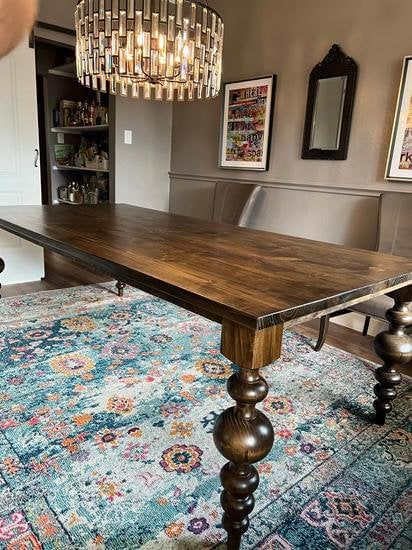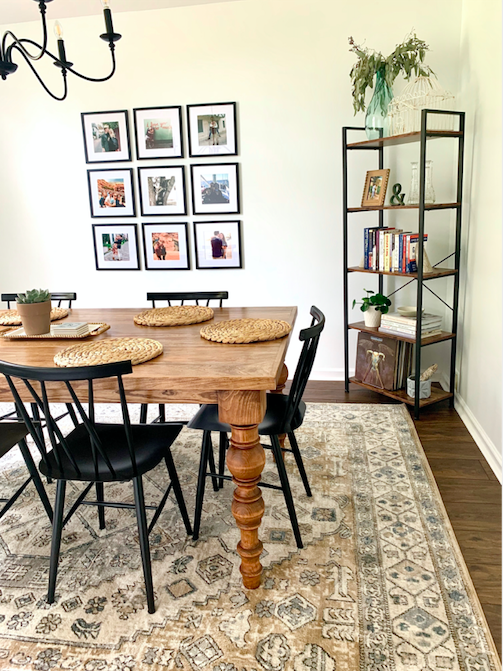The Top Trends in Dining Room Table Legs You Need to Know
The Top Trends in Dining Room Table Legs You Need to Know
Blog Article
From Typical to Modern: Find the Suitable Dining-room Table Legs for Your Design
While classic designs such as cabriole and turned legs evoke a sense of classic class, contemporary styles like barrette and geometric options offer an opportunity for striking visual passion. As you consider these elements, the concern stays: exactly how can you flawlessly incorporate these varied leg styles to create a harmonious dining experience?
Understanding Table Leg Styles
The range of dining-room table leg styles can significantly affect both the aesthetic appeals and functionality of the space. Each leg style contributes one-of-a-kind visual components and sensible attributes, satisfying varied design choices and use requirements. Recognizing these styles is critical for selecting the appropriate table that straightens with your total indoor design vision.
For circumstances, conical legs provide a clean, classic appearance that can boost an area's beauty, while stand bases provide security and optimize legroom, making them optimal for smaller areas. Barrette legs, a hallmark of mid-century contemporary style, present a commercial flair, permitting a ventilated, open feeling. Trestle legs evoke rustic beauty, supplying durable assistance and a sense of eternity.
Wood legs can bring heat and appearance, whereas steel choices commonly share a streamlined, contemporary vibe. Inevitably, understanding table leg styles is crucial for developing a natural dining location that shows personal design while making sure practicality and convenience.
Standard Table Leg Options
When choosing eating area table legs, conventional options commonly personify timeless sophistication and workmanship. These layouts reflect a rich heritage and a commitment to high quality, making them suitable for those who appreciate timeless aesthetic appeals.
Among the most renowned conventional leg styles is the cabriole leg, identified by its elegant curved form. This style frequently includes ornamental carvings and is most typically found in Queen Anne and Chippendale furnishings. An additional popular alternative is the turned leg, which flaunts a series of smooth, rounded shapes that provide a traditional look while keeping security.
In addition, the straight leg, while easy, provides a unadorned and strong structure that can blend seamlessly with a range of tabletop designs. For those attracted to ornate describing, claw-and-ball feet legs stimulate a feeling of majesty and can function as a sensational prime focus in any type of dining room.
Finally, stand bases, although not purely legs, supply an alternative conventional choice that allows for enough legroom and can be perfectly sculpted. Each of these standard leg styles contributes to the overall ambiance of an eating area, weding function with visual allure.

Modern Table Leg Layouts
Modern table leg designs offer a varied series of styles that emphasize tidy lines and ingenious materials. These styles frequently prioritize performance while functioning as striking focal points within an eating space. Minimal looks prevail, with legs crafted from materials such as metal, glass, and engineered timber, which add to a contemporary and ventilated feeling.
One preferred layout is Extra resources the barrette leg, characterized by its slim, conical structure that gives security without overwhelming the table top (dining room table legs). This style is usually found in mid-century modern-day furniture and can effortlessly enhance numerous table shapes. Another pattern is using geometric forms, where legs may tackle angular or unbalanced forms, including aesthetic interest and a touch of virtuosity

Blending Designs for Special Spaces
Typically, home owners seek to create special eating areas that reflect their personal style by blending numerous style elements. This approach permits the consolidation of varied looks, leading to an unified yet unique environment. Matching a rustic wooden table with sleek, contemporary metal legs can create a distinctive contrast that elevates the room's overall allure.
Furthermore, incorporating vintage table legs with contemporary table tops can stimulate a feeling of background while keeping a modern-day perceptiveness. Such mixes not only display private preference however additionally encourage creativity, allowing homeowners to curate a room that really feels both personal and inviting.
Shade plays an important duty in this mixing procedure; picking table legs that complement or comparison with the existing color pattern can enhance visual passion. Whitewashed legs can soften the boldness of a dark table surface area, developing a well balanced visual.
Tips for Choosing the Right Legs
Selecting the right table legs is essential for accomplishing both functionality and aesthetic allure in your eating room. Begin by considering the total style of your space. Standard setups take advantage of legs that include elaborate makings or turned layouts, while modern areas may call for smooth, minimalist styles.
Following, analyze the height and stability of the legs. dining room table legs. Standard table range in between 28 to 30 inches in height, so ensure the legs complement this dimension for comfort. Furthermore, robust materials, such as wood or metal, can improve stability and longevity
Assess the leg form too-- options consist of straight, tapered, or pedestal layouts. Straight legs offer a classic appearance, while tapered legs can add a touch of you can try these out style. Pedestal bases offer ample legroom and are ideal for smaller areas.
Final Thought
In summary, choosing the optimal dining area table legs calls for cautious consideration of both standard and contemporary designs. Traditional options such as cabriole and transformed legs provide timeless elegance, while modern styles like barrette and geometric shapes supply a contemporary touch. By harmonizing leg style, elevation, and product with the total decoration, a natural and welcoming ambience can be achieved. Inevitably, the picked table legs need to show the desired visual, boosting the dining experience within the room.
The variety of dining area table leg styles can significantly affect both the aesthetics and capability of the room. Inevitably, recognizing table leg designs is crucial for creating a cohesive dining location that reflects personal design while ensuring practicality and convenience.One of pop over to these guys the most renowned typical leg designs is the cabriole leg, characterized by its elegant bent shape. Straight legs use a classic look, while tapered legs can include a touch of beauty.In summary, picking the optimal eating area table legs calls for cautious factor to consider of both modern and conventional designs.
Report this page